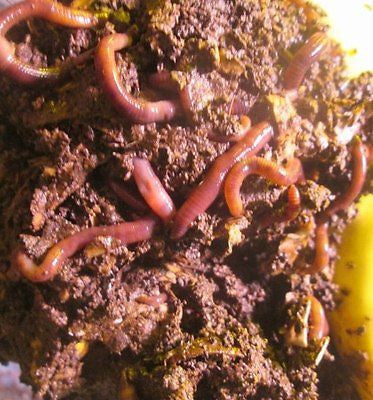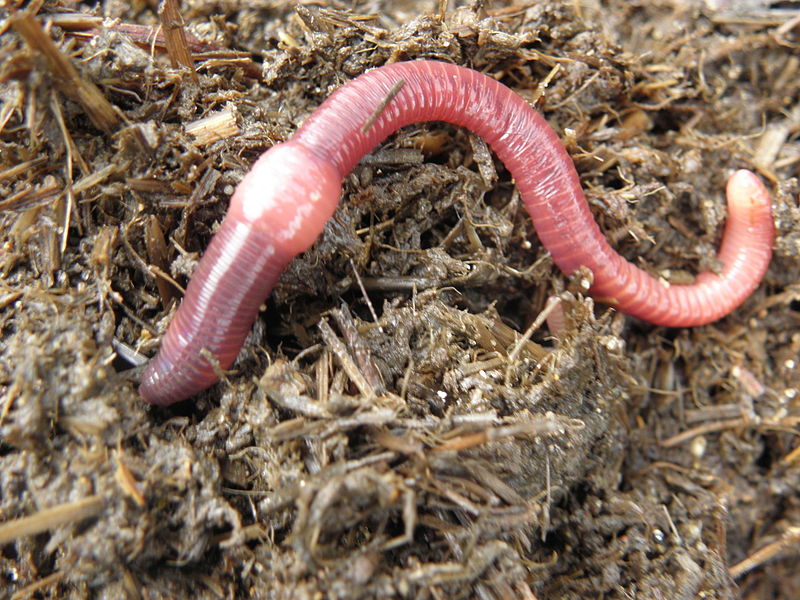Powerful red worms: Improve soil quality
How Red Wigglers Can Increase Your Organic Waste Recycling
Red wigglers represent an essential element in improving natural waste recycling, efficiently transforming daily kitchen area scraps and garden debris right into useful worm castings. Comprehending the ins and outs of developing a vermicomposting system and the optimum care for these worms can significantly amplify the advantages.

Advantages of Red Wigglers
Red wigglers, a kind of composting earthworm, offer numerous benefits that make them indispensable in organic waste recycling. Their capacity to eat a variety of natural products makes them very reliable decomposers. These worms can refine kitchen scraps, yard waste, and also paper items, transforming them right into nutrient-rich castings. This procedure not only lowers the quantity of waste sent to landfills but additionally improves soil wellness.
Additionally, red wigglers enhance soil aeration and drain with their burrowing activities, advertising a healthier root environment for plants. Their castings are abundant in valuable bacteria and necessary nutrients, promoting durable plant growth and enhancing soil framework (red wigglers). Additionally, making use of red wigglers in composting is an environmentally friendly choice to chemical plant foods, which can have unsafe side impacts.
Additionally, vermicomposting with red wigglers is a low-maintenance and effective approach of recycling organic waste, making it easily accessible for houses and neighborhoods alike. Their quick reproduction rate makes sure a steady supply for recurring composting initiatives, further magnifying their benefits. On the whole, red wigglers function as an essential part in sustainable waste administration and dirt improvement techniques.
Setting Up a Vermicomposting System
Producing an efficient vermicomposting system requires careful preparation and consideration of different aspects that add to its success. The foundation of an effective system starts with selecting a suitable bin. Alternatives range from business containers to homemade options, yet it is crucial that the container is well-ventilated and appropriately sized to fit the variety of red wigglers.
Next, the option of bed linens material is important. Ideal bed linen includes shredded paper, cardboard, or coconut coir, which supplies both an environment and a source of carbon for the worms. The bed linen must be moistened but not overly wet to prevent anaerobic problems.
Maintaining the optimum environment is essential. Red wigglers grow in temperatures in between 55 ° F and 77 ° F(13 ° C to 25 ° C )and call for a pH degree around neutral. Monitoring dampness degrees is additionally essential, as excessive wetness can result in smell problems, while as well little can dry the worms.
Last but not least, putting the vermicomposting system in a shaded area safeguarded from direct sunlight will certainly aid preserve a secure atmosphere. With these considerations in mind, one can effectively establish up a flourishing vermicomposting system that enhances natural waste recycling.
What to Feed Red Wigglers
Feeding red wigglers the ideal materials is essential to keeping a healthy vermicomposting system. These worms thrive on a diverse diet mainly composed of raw material, that includes vegetables and fruit scraps, coffee grounds, smashed eggshells, and shredded paper. It is important to stay clear of feeding them meat, dairy, oily foods, or any type of refined things, as these can produce odors, bring in insects, and bring about an unhealthy setting.
A well balanced diet plan for red wigglers advertises optimal food digestion and nutrient manufacturing. Objective for a mix of eco-friendly materials, high in nitrogen, such as veggie peels and turf clippings, and brownish materials, abundant in carbon, like dried over at this website out fallen leaves and cardboard. This balance makes sure a sustainable food source while preserving moisture degrees in the worm bin.
In addition, it is recommended to slice or shred bigger scraps to expedite disintegration and make the food a lot more accessible to the worms. Consistently keeping track of the usage rate will certainly assist determine the ideal amount to feed, protecting against overfeeding and maintaining a thriving ecological community. By offering a suitable diet, you not just support the health and wellness of red wigglers yet likewise boost the efficiency of your vermicomposting initiatives.
Preserving Your Worm Bin
To ensure the health and wellness and efficiency of your vermicomposting system, maintaining your worm container is vital. If it comes to be too wet, excess moisture can lead to anaerobic conditions, hurting your worms.
Temperature level is an additional critical factor. Ideally, the worm bin must be kept in between 55 ° F and 77 ° F(13 ° C to 25 ° C) Severe temperatures can stress or kill your worms. To achieve this, position your container in a climate-controlled atmosphere away from straight sunlight or heat sources.
Delicately turning the bedding with a garden fork every couple of weeks will assist aerate the product and protect against compaction - red wigglers. If this happens, minimize feeding and add even more carbon-rich materials like shredded paper or cardboard.
(Western North Carolina Bait)
Making Use Of Worm Castings in Horticulture

Worm castings, commonly described as "black gold" by garden enthusiasts, are a highly nutritious organic fertilizer that can significantly improve soil wellness and plant growth. These castings are generated by red wigglers as they digest organic matter, causing a rich, dark, brittle substance bristling with valuable bacteria.
Including worm castings into garden soil boosts its structure, oygenation, and dampness retention, developing an optimum setting for root advancement. The high nutrient material of worm castings, consisting of nitrogen, phosphorus, and potassium, adds to vigorous plant growth and raised returns. In addition, worm spreadings have essential trace element and enzymes that advertise the general health and wellness of plants, allowing them to much better hold up against pests and diseases.
Worm castings can be used directly to the soil or combined into potting blends for container horticulture. A thin layer spread over garden beds or contributed to compost stacks can additionally boost the microbial activity and nutrient profile of the garden compost. As a sustainable and green plant food option, worm castings support organic gardening practices while lowering reliance on synthetic plant foods, thus fostering a healthier environment.
Conclusion
In final thought, the integration of red wigglers right into natural waste recycling methods offers a sensible solution for enhancing dirt wellness and advertising sustainable horticulture methods. By properly decaying kitchen scraps and yard waste, red wigglers add to nutrient-rich worm castings that enhance soil oygenation and wetness retention. This green method not only lowers land fill payments however likewise diminishes the reliance on chemical plant foods, ultimately promoting much healthier environments and accountable waste administration methods.